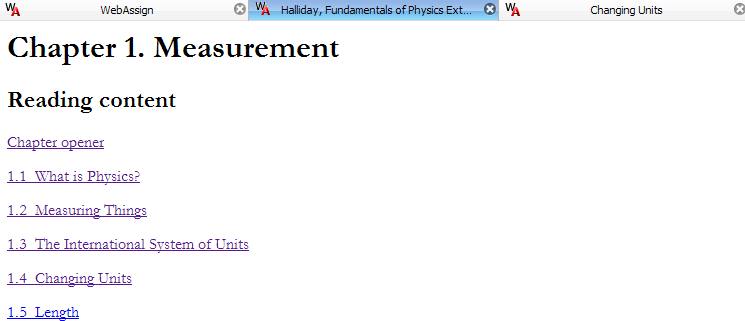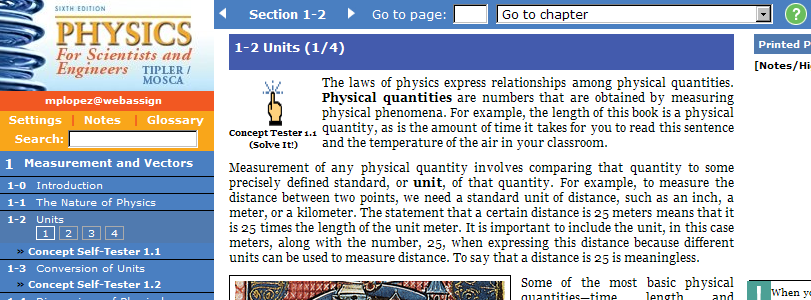The features and implementation of each eBook is dependent on the publisher. Some eBooks are distributed as Web pages and some are PDF documents. Many eBooks include help information from the publisher that describes how to use the features that are available for that eBook.
Many eBooks share some of the following characteristics:
- eBooks generally include the complete text of the printed textbook, along with all figures and illustrations.
- eBooks usually have a table of contents that you can click to navigate to specific chapters or sections.
- You can usually search for text in eBooks.
- You can usually navigate to a specific page number by typing the page number in a text box.
- You can often bookmark pages in the eBook.
- You can often add highlighting and notes to the eBook. Your highlighting and notes are saved between sessions and are available to you anytime when you open the eBook.
- You can usually zoom in and out when viewing the eBook.
- You can sometimes click on links in the eBook which open media such as videos. Some of these additional media are interactive.
- You can usually print pages from the eBook.
- You can sometimes save the eBook to your computer for offline viewing.
- You can sometimes use an interactive glossary or click on certain terms in the text to view the glossary definition.
- Often the eBook will have a toolbar for navigating the eBook and implementing its various features.
The following figures illustrate some of the differences among eBooks.
An eBook that opens each section in a separate window or browser tab:

An eBook that includes the navigation, content, search, and other features on a single Web page:
